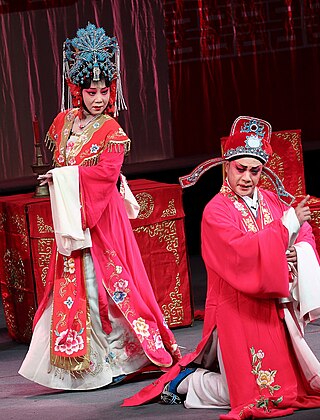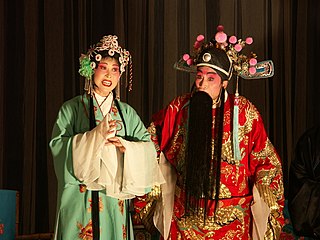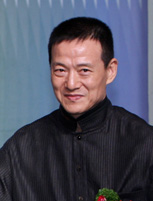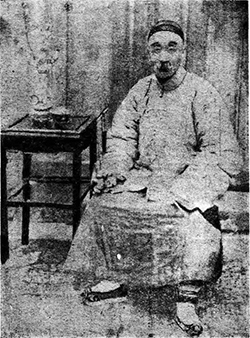
Traditional Chinese opera,or Xiqu,is a form of musical theatre in China with roots going back to the early periods in China. It is an amalgamation of various art forms that existed in ancient China,and evolved gradually over more than a thousand years,reaching its mature form in the 13th century,during the Song dynasty. Early forms of Chinese theater are simple;however,over time,various art forms such as music,song and dance,martial arts,acrobatics,costume and make-up art,as well as literary art forms were incorporated to form traditional Chinese opera. Performers had to practice for many years to gain an understanding of the roles. Exaggerated features and colors made it easier for the audience to identify the roles portrayed.

Cantonese opera is one of the major categories in Chinese opera,originating in southern China's Guangdong Province. It is popular in Guangdong,Guangxi,Hong Kong,Macau and among Chinese communities in Southeast Asia. Like all versions of Chinese opera,it is a traditional Chinese art form,involving music,singing,martial arts,acrobatics,and acting.

Peking opera,or Beijing opera,is the most dominant form of Chinese opera,which combines instrumental music,vocal performance,mime,martial arts,dance and acrobatics. It arose in Beijing in the mid-Qing dynasty (1644–1912) and became fully developed and recognized by the mid-19th century. The form was extremely popular in the Qing court and has come to be regarded as one of the cultural treasures of China. Major performance troupes are based in Beijing,Tianjin and Shanghai. The art form is also preserved in Taiwan,where it is also known as Guójù. It has also spread to other regions such as the United States and Japan.

Kunqu,also known as Kunju (崑劇),K'un-ch'ü,Kun opera or Kunqu Opera,is one of the oldest extant forms of Chinese opera. It evolved from a music style local to Kunshan,part of the Wu cultural area,and later came to dominate Chinese theater from the 16th to the 18th centuries. It has been listed as one of the Masterpieces of the Oral and Intangible Heritage of Humanity by UNESCO. Wei Liangfu refined the musical style of kunqu,and it gained widespread popularity when Liang Chenyu used the style in his drama Huansha ji. In 2006,it was listed on the first national intangible cultural heritage list. In 2008,it was included in the List of Representative Works of Intangible Cultural Heritage of Humanity. In December 2018,the General Office of the Ministry of Education announced that Peking University is the base for inheriting excellent traditional Chinese culture in Kunqu.

Taiwanese opera commonly known as Ke-Tse opera or Hokkien opera,is a form of traditional drama originating in Taiwan. Taiwanese opera uses a stylised combination of both the literary and colloquial registers of Taiwanese Hokkien. Its earliest form adopted elements of folk songs from Zhangzhou,Fujian,China. The plots are traditionally drawn from folk tales of the southern Fujian region,though in recent years stories are increasingly set in Taiwan itself. Taiwanese opera was later exported to other Hokkien-speaking areas,such as Singapore,Malaysia,the Philippines,and Fujian,China.

Theatre of China has a long and complex history. Traditional Chinese theatre,generally in the form of Chinese opera,is musical in nature. Chinese theatre can trace its origin back a few millennia to ancient China,but the Chinese opera started to develop in the 12th century. Western forms like the spoken drama,western-style opera,and ballet did not arrive in China until the 20th century.

Dan is the general name for female roles in Chinese opera,often referring to leading roles. They may be played by male or female actors. In the early years of Peking opera,all dan roles were played by men,but this practice is no longer common in any Chinese opera genre.

Yu opera,or Yuju opera,sometimes known as Henan bangzi,is one of China's famous national opera forms,alongside Peking opera,Yue opera,Huangmei opera and Pingju. Henan province is the origin of Yu opera. Henan's one-character abbreviation is "豫" (yù),and thus the opera style was officially named "豫剧" (Yùjù) after the founding of the People's Republic of China. The area where Yu opera is most commonly performed is in the region surrounding the Yellow River and Huai River. According to statistical figures,Yu opera was the leading opera genre in terms of the number of performers and troupes. While Yu opera is often called "Henan opera" in English,within Henan it is considered to be just one of the province's three most important forms of opera,the other two being Quju (曲剧) and Yuediao (越调).

Sichuan opera is a type of Chinese opera originating in China's Sichuan province around 1700. Today's Sichuan opera is a relatively recent synthesis of five historic melodic styles. Chengdu is the main home of Sichuan opera,while other influential locales include Chongqing,Guizhou,Yunnan,Hubei and Taiwan. Sichuan opera was listed among the first batch of the Chinese Ministry of Culture's "Intangible Cultural Heritage List",announced on May 20,2006.

Wu Hsing-kuo is a Taiwanese actor of the silver screen and theater,known for both his performance of complex movie roles as much as for his innovative adaptations of Western classics into traditional Peking Opera.

The bangu,often simply gu,is a Chinese frame drum that,when struck by one or two small bamboo sticks,creates a sharp dry sound essential to the aesthetics of Chinese opera. Striking the drum in different places produces different sounds. It is also used in many Chinese chamber music ensembles. The percussion section is very important in Chinese Opera,with battle or 'martial' scenes,which are called wu-chang. The bangu player is the director or conductor of the orchestra,working with the other members of the percussion section to create the right mood for the audience and actors on stage.

Anhui Opera,also known as Huiju [徽剧],is a traditional Chinese opera form that originated in Anhui Province during the Ming Dynasty. It is a crucial part of Huizhou culture and significantly contributed to the development of Peking Opera.
Huaihai opera is a form of local traditional Chinese theatre which combines musics,vocal performance,and dance. Some plays contain mime,acrobatics,and Kung fu. It was created in the 19th century and fully developed in the World War II. The form is popular in Shuyang,Suqian,Lianyungang and Yancheng,with the dialect of Shuyang as the standard pronunciation.
Maoqiang opera is a local folk opera style from the Jiaozhou area of the Shandong Peninsula in eastern China. It has been listed as a national-level intangible cultural heritage item since 2006.

The Jing is a role type in Chinese opera for "rough" or "mighty" male characters. In many genres,this role requires heavy face painting. As a result,it is also known as Hualian. However,not all characters with painted faces fall into this category,with Chou (clowns) being another major painted-face role type.

Wei Hai-min is a Taiwanese Peking opera singer-actress who plays Dan roles. A winner of Taiwan's National Award for Arts and China's Plum Blossom Prize,Wei is widely recognized a Peking opera superstar. She is the first student of Mei Baojiu,who is one of the most well-known Peking opera masters in the world.
Liu Baoshan,better known by his stage name Liu Gansan,was a Qing dynasty Peking opera artist based in Beijing,who specialized in Chou roles,or clowns. He was well known for playing ugly women and making ad-lib comments in his roles to poke fun at the powerful. He was from Tianjin.
Cheng Changgeng was a Qing dynasty Hui opera and Peking opera artist based in Beijing,who specialized in laosheng roles,or old gentlemen. Sometimes called the "Father of Peking Opera",he was the leader of the Three Celebrations Company (三慶班) as well as the leader of the actor's guild in Beijing. He was from Qianshan,Anhui.

Xu Xiaoxiang,born Xu Xin,courtesy name Xinyi and art name Diexian,was a Qing dynasty kunqu and Peking opera artist based in Beijing. He specialized in portraying xiaosheng roles,or younger gentlemen. His best known roles included Zhou Yu in Meeting of Heroes (群英會),Xu Xian in Legend of the White Snake,and Liu Mengmei in The Peony Pavilion.
Mei Qiaoling,born Mei Fang,courtesy name Xiaobo and art name Huixian,was a Qing dynasty Peking opera and kunqu artist based in Beijing. He specialized in playing dan roles,or women. Originally from Taizhou,Jiangsu,he was sold to a childless man in Suzhou at age 8. After that man remarried and begot a son,Mei was sold again,this time to a theatrical troupe where he had to train to become a performer. He rose to stardom despite his pudginess,which earned him the nickname "Fat Qiaoling" (胖巧玲). At age 30,he became the leader of the Four Happiness Troupe (四喜班),one of the most famous troupes in Beijing,and rarely performed after that.















